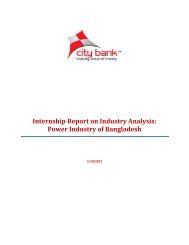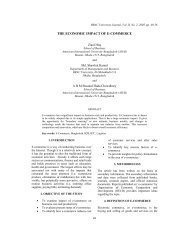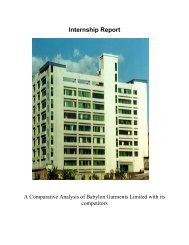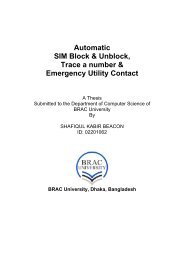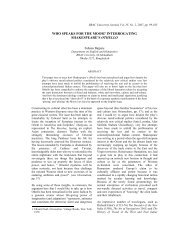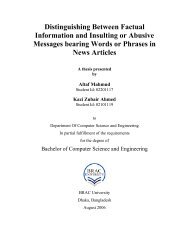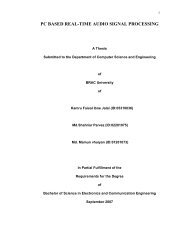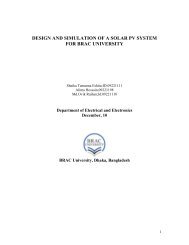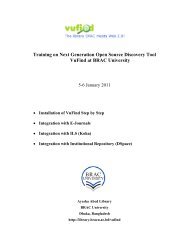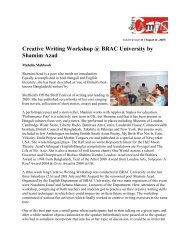LITERATURE SURVEY OF AUTOMATIC FACE RECOGNITION ...
LITERATURE SURVEY OF AUTOMATIC FACE RECOGNITION ...
LITERATURE SURVEY OF AUTOMATIC FACE RECOGNITION ...
You also want an ePaper? Increase the reach of your titles
YUMPU automatically turns print PDFs into web optimized ePapers that Google loves.
4.14 Bayesian Framework<br />
A probabilistic similarity measure based on Bayesian belief that the image<br />
intensity differences are characteristic of typical variations in appearance of an<br />
individual. Two classes of facial image variations are defined: intrapersonal<br />
variations and extra personal variations. Similarity among faces is measures<br />
using Bayesian rule.<br />
4.15 Hidden Markov Models (HMM)<br />
Hidden Markov Models (HMM) are a set of statistical models used to<br />
characterize the statistical properties of a signal. HMM consists of two<br />
interrelated processes: (1) an underlying, unobservable Markov chain with a finite<br />
number of states, a state transition probability matrix and an initial state<br />
probability distribution and (2) a set of probability density functions associated<br />
with each state.<br />
HMM approach for face recognition based on the extraction of 2<br />
dimensional discrete cosine transformation (DCT) feature vectors. The author<br />
takes advantage of DCT compression property for feature extraction. An image is<br />
divided by blocks of a subimage associated with observation vector. In HHM,<br />
there are unobservable Markov chain with limited number of status in the model,<br />
the observation symbol probability matrix B, a state transition probability matrix<br />
A, initial state distribution π, and set of probability density functions (PDF). A<br />
HMM is defined as the triplets λ = (A, B, π). For frontal human face images, the<br />
important facial components appear in top to bottom order such as hair,<br />
forehead, eyes, nose, mouth, and chin. This still holds although the image rotates<br />
slightly in the image plane. Each of the facial regions is assigned to one state in<br />
1D continuous HMM. The transition probability ai j and structure of face model is<br />
illustrated in following Figure.<br />
29



